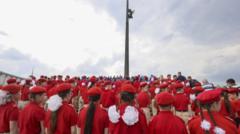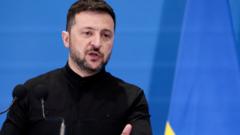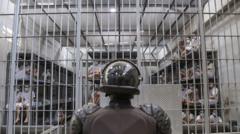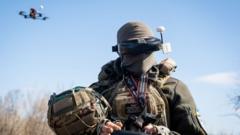With recent territorial advancements in Ukraine, Russia's military strategy is being bolstered by recruitment incentives, while concerns about the sustainability of its economy and global support for Ukraine linger.
Strategic Shifts in the Russia-Ukraine Conflict: An Analysis of Recent Developments

Strategic Shifts in the Russia-Ukraine Conflict: An Analysis of Recent Developments
Russia's summer offensive is gaining momentum as control expands amidst economic challenges and recruitment efforts intensify.
The ongoing conflict in Ukraine has been marked by significant developments, as Russia's summer offensive is yielding substantial territorial gains. In just the past two months, Russian forces have intensified their assaults across various fronts, including the regions of Sumy in the north and Zaporizhzhia in the south. Now, Russia has captured more than two-thirds of the Donetsk region, altering the dynamics on the ground.
Analysts note that Russia's motives extend beyond mere territorial acquisition. Instead, there is a systematic aim to dismantle the operational capability of the Ukrainian military while gradually deploying its own forces. However, a formidable challenge looms for Russia: its economy is struggling to keep pace with the demands of heightened military expenditure.
The situation for Ukraine is similarly precarious, with international support becoming increasingly uncertain. Recent statements from the Trump administration have raised questions about the extent to which the U.S. will continue to provide military aid to Ukraine, further complicating the already volatile situation.
Recruitment efforts in Russia have escalated, where enticing sign-up bonuses and competitive salaries are being marketed to boost troop numbers. As ads flood the streets of Moscow, the Kremlin appears determined to bolster its military ranks amid ongoing challenges on the battlefield. The ultimate outcome of the conflict may hinge on developments far removed from the front lines, as both nations navigate the complexities of military strategy, economic sustainability, and international support.
Analysts note that Russia's motives extend beyond mere territorial acquisition. Instead, there is a systematic aim to dismantle the operational capability of the Ukrainian military while gradually deploying its own forces. However, a formidable challenge looms for Russia: its economy is struggling to keep pace with the demands of heightened military expenditure.
The situation for Ukraine is similarly precarious, with international support becoming increasingly uncertain. Recent statements from the Trump administration have raised questions about the extent to which the U.S. will continue to provide military aid to Ukraine, further complicating the already volatile situation.
Recruitment efforts in Russia have escalated, where enticing sign-up bonuses and competitive salaries are being marketed to boost troop numbers. As ads flood the streets of Moscow, the Kremlin appears determined to bolster its military ranks amid ongoing challenges on the battlefield. The ultimate outcome of the conflict may hinge on developments far removed from the front lines, as both nations navigate the complexities of military strategy, economic sustainability, and international support.






















